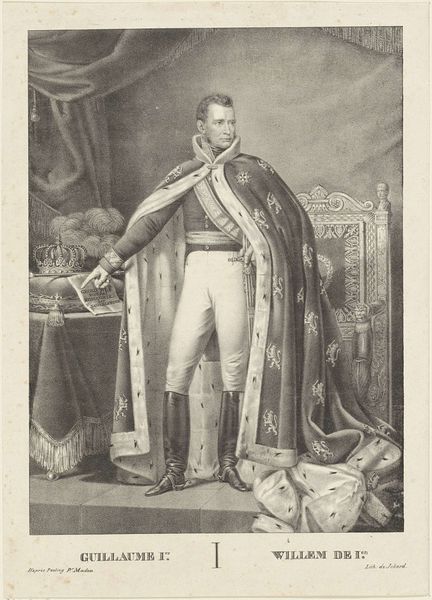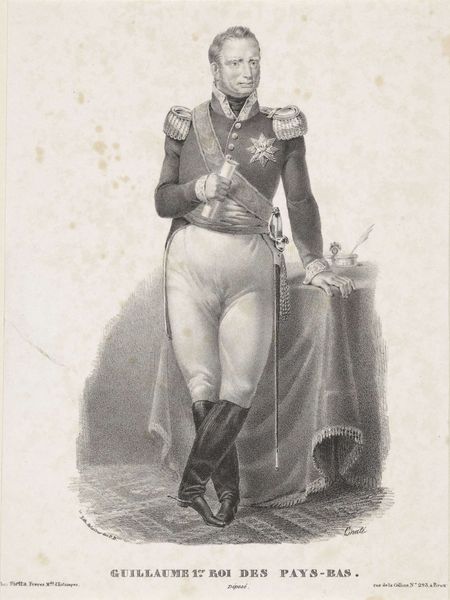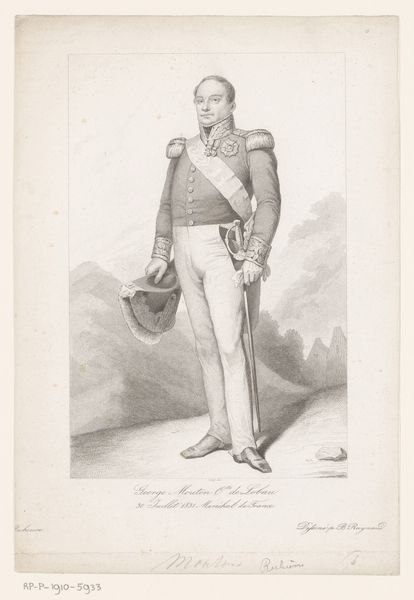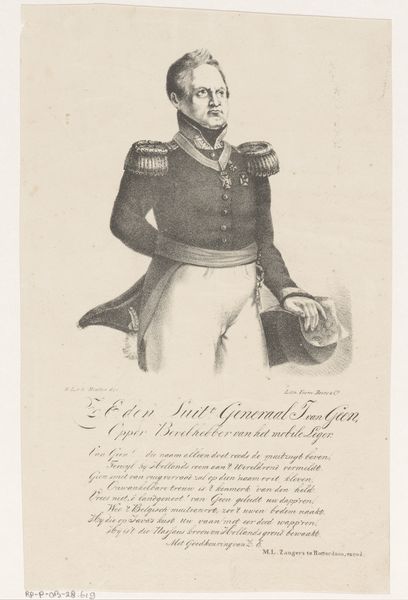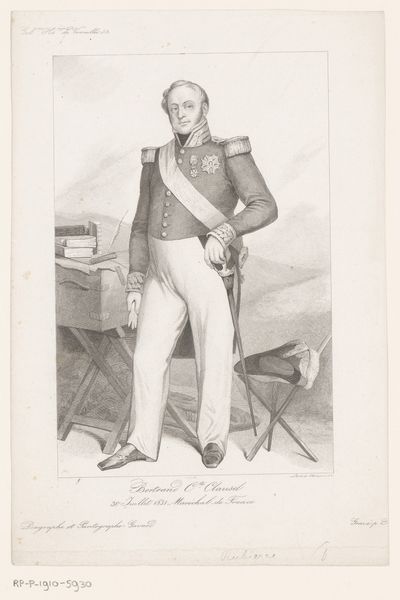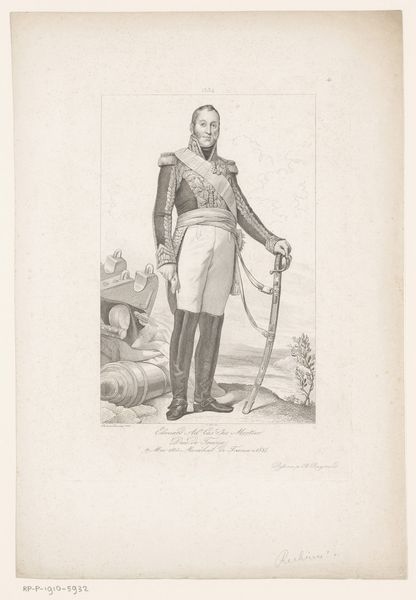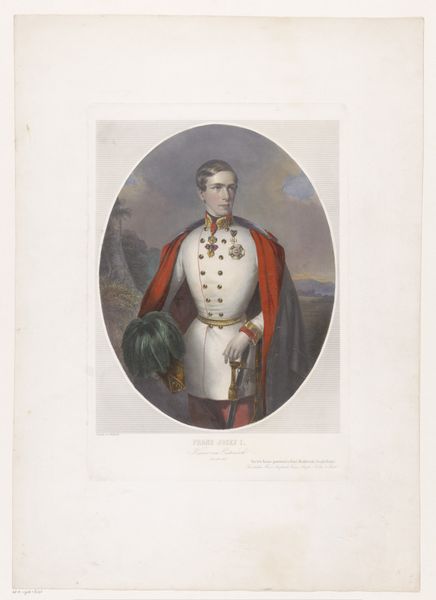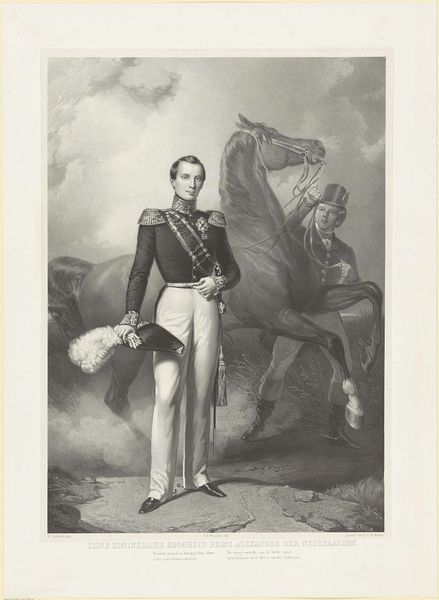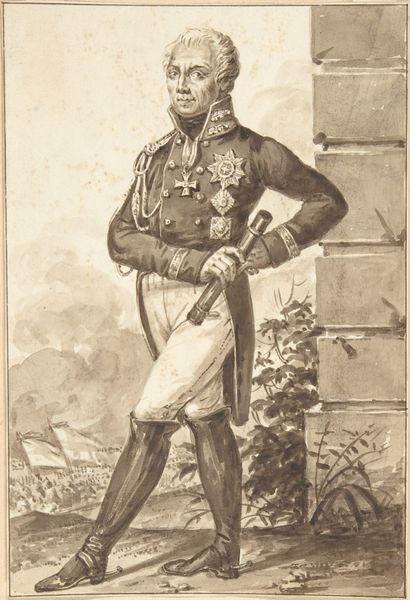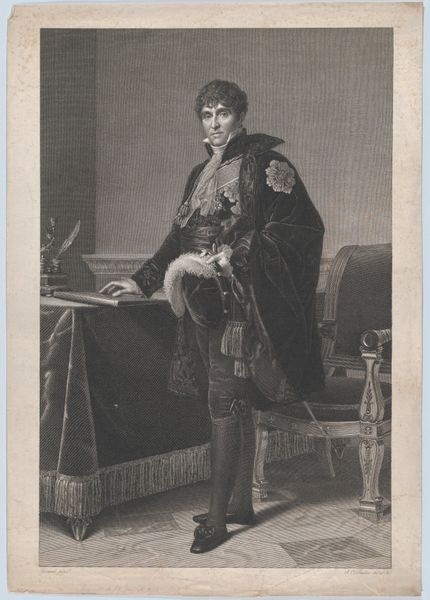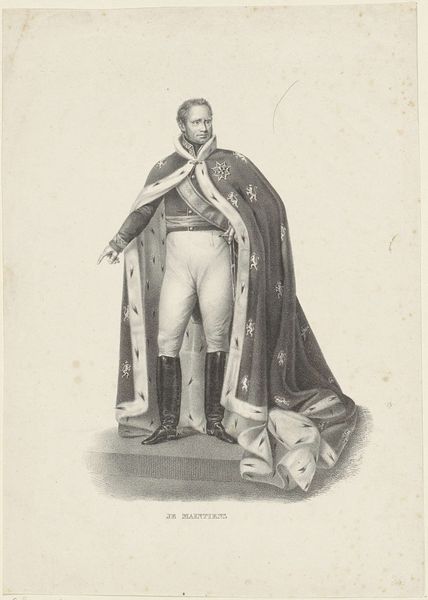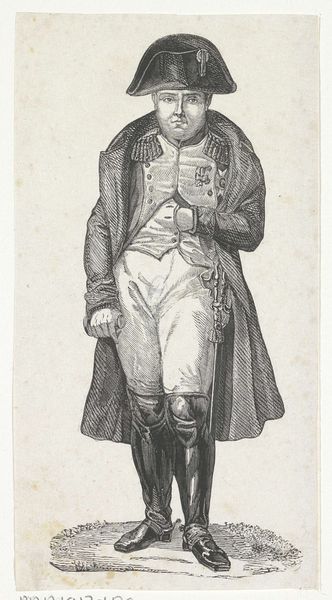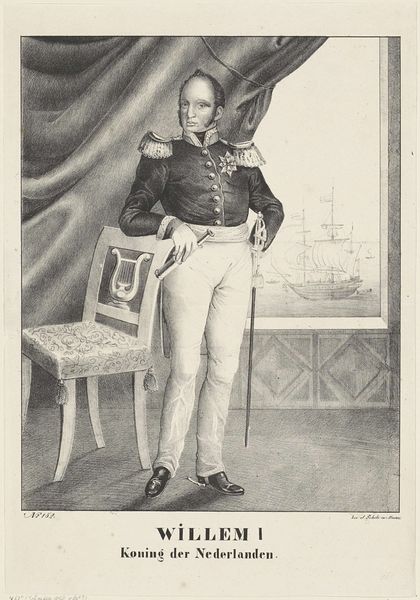
print, engraving
#
portrait
#
neoclacissism
# print
#
old engraving style
#
19th century
#
history-painting
#
engraving
Dimensions: height 685 mm, width 473 mm
Copyright: Rijks Museum: Open Domain
Curator: This is a portrait of Willem I Frederik, King of the Netherlands, created around 1824 by Pieter Jan de Vlamynck. The artwork is a print, specifically an engraving. Editor: The king's formal posture exudes a certain rigidity. He seems detached and rather distant. Curator: The meticulous lines created through engraving offer an intriguing window into the printing processes of the time. Look closely and you’ll notice the precise detail of the crown jewels but also the somewhat mass produced nature. This reflects how printmaking allowed for wider access to royal imagery. Editor: Access yes, but controlled. Consider the deliberate symbolism: the royal garb, the ornate throne topped with sphinxes. This constructs a particular narrative of power. Whose interests did it serve, and perhaps, equally important, whose voices are missing? Curator: Engravings like this served to solidify power structures and national identities, and it reminds us that such printed media facilitated cultural influence. We might even consider how labor and cost played into widespread circulation. Editor: Absolutely, by understanding its political context we unveil that the work becomes more than just an image. It transforms into a tool of nation-building and legitimization during a time of shifting social dynamics. The act of dissemination itself shaped public opinion and the image of monarchy. Curator: Thinking about it from a purely production standpoint, engravings necessitate a craftsman skilled in both artistic expression and the physical labor of carving. Each line etched is a deliberate action contributing to the final representation. It represents hours of meticulous work and potentially apprenticeship. Editor: It’s these details— the labor behind the visual narrative, and the societal role that engravings played— that provide this print a significance far beyond mere aesthetics. Considering its history and materiality lets us examine not only how it operated as a work of art but its place as a tool within much wider cultural currents. Curator: Indeed, a final observation reveals a meticulous material record combined with the power relations reflected in early nineteenth century royalty. Editor: Exactly, offering us the chance to think critically about representation and power.
Comments
No comments
Be the first to comment and join the conversation on the ultimate creative platform.
